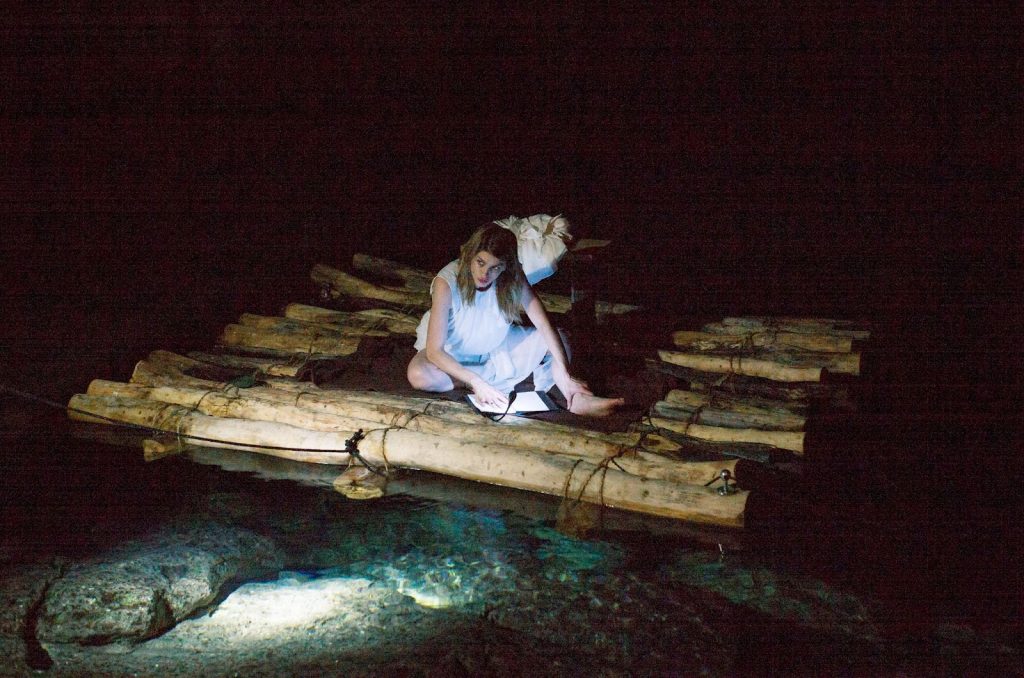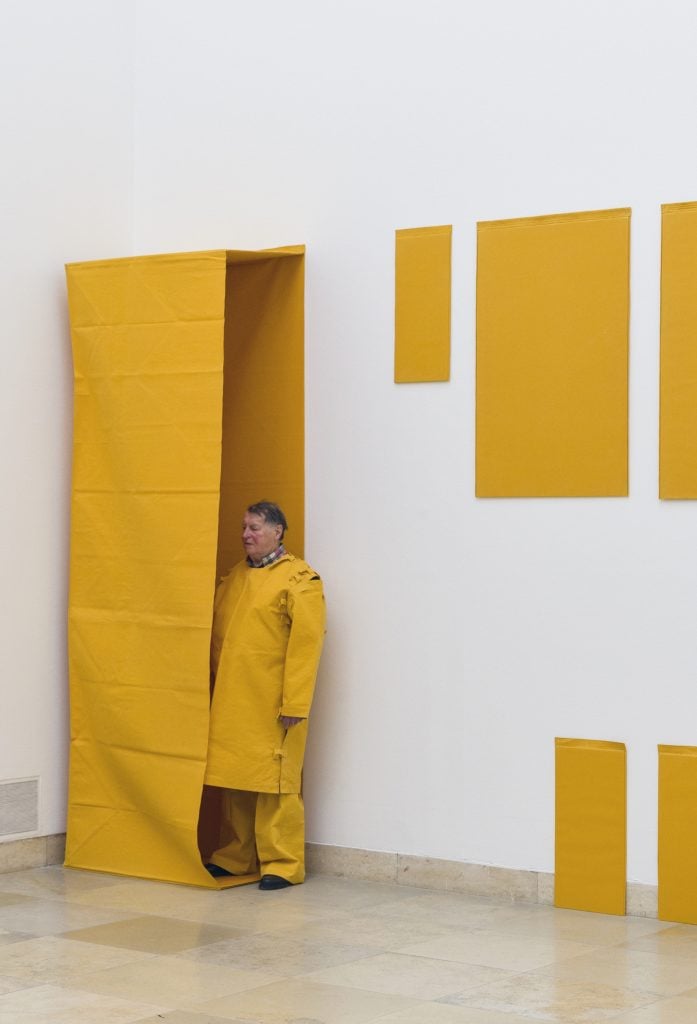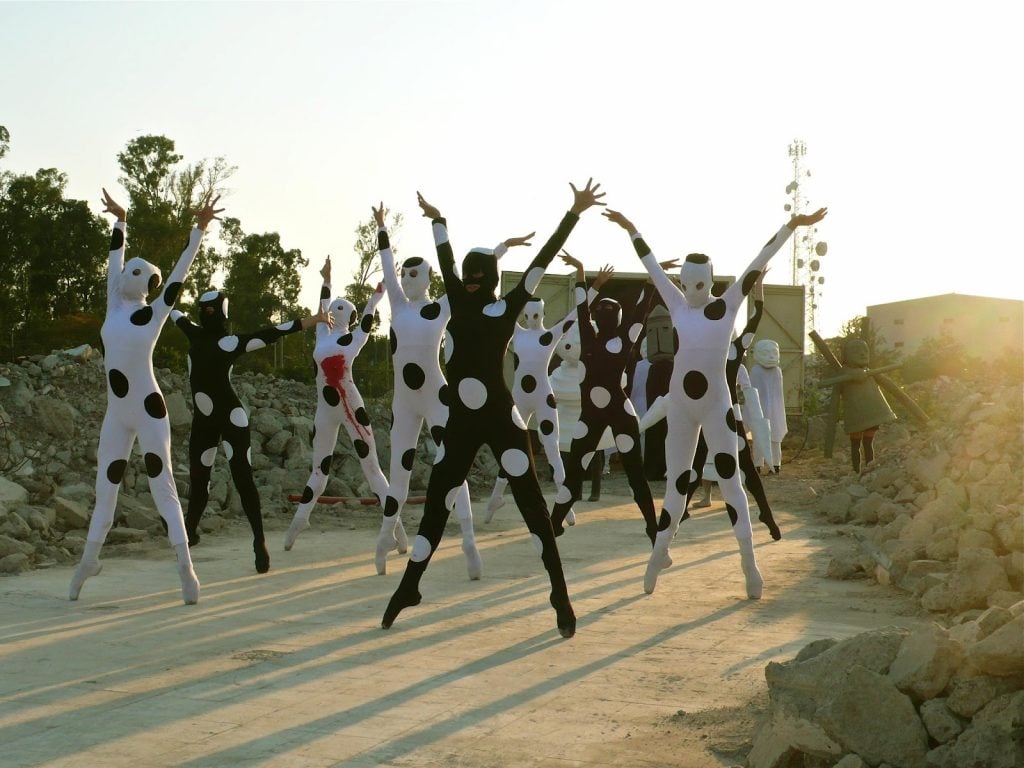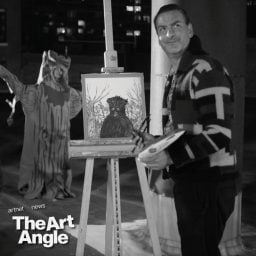A dance inspired by social media, a live reading of a Marguerite Duras book: These are some of the projects that will highlight Performa Biennial 2023, set to open across various locations in New York from November 1–19.
The show, Performa’s 10th since the organization was founded in 2004, will feature newly commissioned performance pieces from a group of international artists, including Julien Creuzet, Marcel Dzama, Nikita Gale, Nora Turato, Franz Erhard Walther, and Haegue Yang—many of whom are experimenting with the medium for the first time.
As in past biennials, the list of participants represents a wide range of ages, backgrounds, and practices. But RoseLee Goldberg, Performa’s founder and chief curator, sees cohesion in the diversity. These artists, she explained, “deal in very different ways with our biggest concerns—race and gender, climate change, fake news, the Black Atlantic, the aesthetics of dissent—yet each says as much in highly nuanced, sometimes abstract voices.”
“The work verges on the cerebral, yet, in the context of Performa… the artists have broadened their scope, expanded and extended the possibilities of their creative visions—and their potential audiences as well,” Goldberg added. “It’s an exciting process and you will be surprised and delighted by the results.”

Haegue Yang, The Malady of Death – Monodrama with Irene Azuela (2016). Photo: Heinz Peter Knes.
For his part, Dzama will bring the whimsical imagery of his paintings to life in a performance that blends song, spoken word, animated video, and dance. The piece, which will be presented at the Abrons Art Center in lower Manhattan, reimagines Federico García Lorca’s kinetic 1929 poem, “Trip to the Moon.” Creuzet, meanwhile, will stage his first large-scale choreographic work, the movements of which were culled from the social media accounts of various African content creators. The piece is co-commissioned by the Hartwig Art Foundation.
At the Guggenheim, a single performer will read The Malady of Death, a 1982 novella by filmmaker Marguerite Duras, in an artwork conceived by Yang. Gale’s contribution, her first live performance, will feature an ensemble of classical musicians and a light installation. The piece offers a meditation on the increasing volatility of weather in the face of the climate crisis.
The biennial’s eldest participant is the German artist Franz Erhard Walther, who has, since the 1960s, explored the capacity of materials to mold our understanding of space and time. In Donald Judd’s former home and studio in Soho, Walther will direct viewers to move, manipulate, and even wear a collection of fabric sculptures.

Franz Erhard Walther, “Shifting Perspectives,” installation view at Haus der Kunst, Munich, 2020. Courtesy of the artist and Haus der Kunst.
As its 10th edition, this year’s show marks something of a milestone for Performa, and for Goldberg, who has long been one the industry’s great champions of performance art.
Back in 2004, Goldberg said, “we set out to make public the long history of performance art, to show its central significance to art history, and to commission new work for the 21st century, fully supported and produced by Performa, that would raise the profile of performance art and attract general audiences.”
“In all instances, mission accomplished,” she went on, citing Performa’s past publications and symposia, its ongoing curatorial and fellowship programs, and the growing number of performance art departments in major museums. True to the organization’s roots, Goldberg also called attention to the myriad ways in which Performa has used the “city as a stage,” and the local-level impacts of its programs.
Still, for Goldberg, the magic of her chosen medium remains: “The intensity in the presence of the artist in real-time, of spending time with an artist’s work and ideas, that characterize live art has triggered comments from many that performance art provides a gathering place, a visceral pleasure for viewers and a direct exchange that is often missing within the four white walls of galleries,” Goldberg said.
“Given the ubiquity of technology including the anticipated generation of A.I. artwork, many see performance as the antidote to so much media. We see it as the future.”









